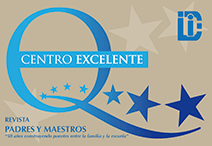Bilingual education and Content and Language Integrated Learning (CLIL): Research and its classroom implications
Keywords:
bilingualism, bilingual education, content and language integrated learning (CLIL), cross-lingual transfer,Abstract
The paper reviews the research findings from bilingual education and CLIL programs implemented in countries around the world. These findings show that bilingual programs promote strong academic skills in the target language at no cost to students’ proficiency in the dominant school language. The fact that less instructional time through the dominant societal language results in no negative effects on students’ academic development in that language suggests that cross-lingual transfer of concepts, learning strategies, and linguistic elements is occurring in bilingual and CLIL programs. The paper argues that cross-lingual transfer can be enhanced when teachers explicitly teach for transfer across languages rather than keeping the two languages rigidly separate.Downloads
Download data is not yet available.
Downloads
Published
2013-04-24
How to Cite
Cummins, J. (2013). Bilingual education and Content and Language Integrated Learning (CLIL): Research and its classroom implications. Journal of Parents and Teachers, (349), 6–10. Retrieved from https://revistas.comillas.edu/index.php/padresymaestros/article/view/6-10
Issue
Section
Artículos
License
El Servicio de Publicaciones de la Universidad Pontificia Comillas (la editorial) conserva los derechos patrimoniales (copyright) de las obras publicadas en Padres y Maestros.
Pasado el periodo de embargo está permitida la reutilización del contenido bajo una Licencia Creative Commons Atribución-NoComercial-SinDerivadas 3.0 Unported.










